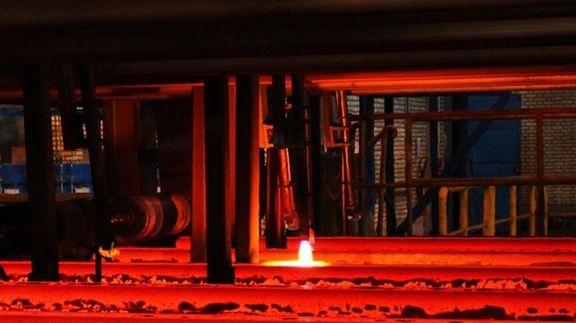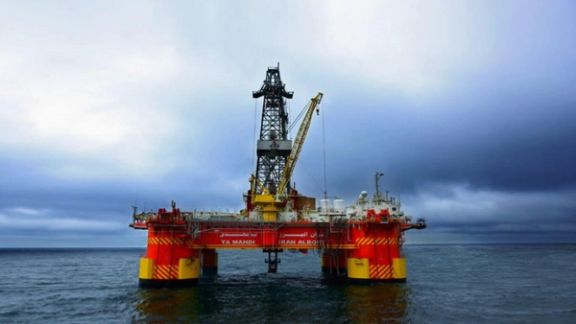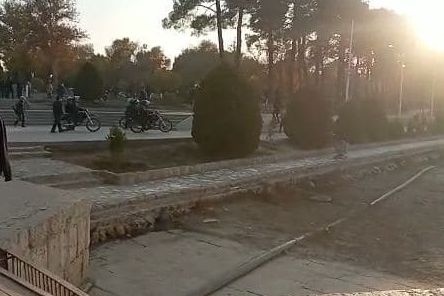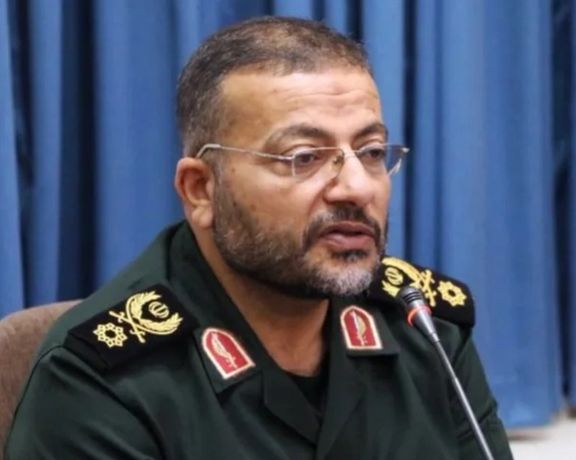Iran's Steel Production Falls By 15 Percent In October

Iran’s steel production fell by 15 percent in October, following smaller declines earlier in the year resulting from lack of electricity, after years of growth.

Iran’s steel production fell by 15 percent in October, following smaller declines earlier in the year resulting from lack of electricity, after years of growth.
The World Steel Association in its latest report showed Iran as the tenth largest producer in the world after Brazil but with a large drop, which dragged down overall steel production in the Middle East.
Iran has been suffering from an acute electricity shortage in recent years as its natural gas production, feeding power plants, fails to keep up with domestic demand. Lack of investments and technology resulting from years of various sanctions have gradually reduced output in operating gas fields.
Iran has been counting on exporting more steel and other metals, including copper and iron ore to reduce dependance on oil exports. The drop in steel production would hurt the government’s foreign currency revenues at a time when US sanctions have reduced its oil export income.
Iran produced around 29 million tons of steel in 2020, which was 16 percent higher than in 2018 and 141 percent more than a decade earlier.
Iran’s Steel Producers’ Association has also confirmed that production of metals fell between 3-13 percent since March 21, the beginning of the current Iranian year.

With a potential output worth $450 billion over its first 20 years, Iran’s Chalous gas field in the Caspian Sea, raises issues of both finance and where the gas might sell.
The field, whose discovery Iran proclaimed in June and which has perhaps 3.5 trillion cubic meters (m3) of gas, reportedly is part of discussions with Russia over a strategic cooperation agreement.
Europe seems an obvious market, and one where Russia already has a large footprint. With demand rising in cold weather, European buyers are struggling due to a lack of supply in both natural gas and LNG (liquefied natural gas).
Iran currently exports gas to Turkey, Iraq, and Armenia. Exporting gas to Europe is a main goal of Iran’s oil ministry even though the necessary infrastructure is not in place.
But Iran is a long way from being able to meet Europe’s growing needs. As the Chalous field is under deep water in the Caspian, extraction requires finance and advanced technology, which Iranian companies lack. Any western European, Chinese, and Russian companies could be deterred by possible punitive US action under ‘maximum pressure’ sanctions. The China National Petroleum Company (CNPC), like France’s Total, left its contract to develop phase 11 of South Pars, Iran’s gas-field in the Persian Gulf, in fear of United States ‘maximum pressure’ sanctions.
Moscow’s Gas Calculations
Russia’s own gas exports to Europe are caught up in Moscow’s complex calculations. Russia supplies around half of the gas imported by the EU, and as much as 90 percent of the gas supplied to some countries. Russia also plans to export LNG to Europe.
Due to the energy crisis, Russian gas is expected to flow within months through the 1,225km (760-mile), €10 billion Nord Stream 2 pipeline, although its approval was recently suspended by Germany's energy regulator, leading to a 17 percent jump in gas prices in the European Union. The Kremlin is doubly keen on Nord Stream 2 because it could transit Russian gas directly to Germany under the Baltic Sea and so avoid paying transit fees to Ukraine.
In the meantime, a daily supply of only 30 million m3 was booked by Gazprom from the Yamal Peninsula, north-west Siberia and a major area of gas reserves, to supply by pipeline to Europe in November, well below a possible 86.5 m3. Gazprom has made no bookings though the Ukrainian pipeline.
Russia’s management of supplies to Europe’s suggests its deal with Iran over Chalous − which according to Oilprice.com would for 20 years allocate 40 percent of production to Russia, 28 percent to China, and 32 percent to Iran − might Moscow managing a potential rival rather than a sales bonanza for Tehran.
Surging Chinese Demand
Might China, where electricity shortages have pushed some provinces to implement power rationing, be a better market for Iranian gas?
With the relative easing of the Covid-19 pandemic, demand has surged in China. In the first six months of 2021, Beijing’s LNG imports exceeded those of Japan, and are likely to do so for the rest of the year. At the end of September, Inter RAO – a Russian power generator – was asked by Chinese authorities to increase supplies to China.
Beijingis well diversified, looking to a variety of countries to meet its energy needs. Around 16 percent of its oil comes from Saudi Arabia, 16 percent from Russia, and 11 percent from Iraq.
Last month the US signed a new agreement to export LNG to China. In 2019, when tariffs were 25 percent, only two US LNG cargoes were shipped to China, but after China lowered tariffs to 10 percent, US LNG exports to China averaged 0.6 billion cubic feet a day (17 million m3) in 2020.
Falling South Pars Output
But even if the Chalous field gas is extracted in the future, its gas could not be easily exported to China or Europe. At present, gas from Iran’s South Pars field goes 70 percent to meet domestic demand, and the field is already entering its second half of life.
According to some estimates, South Pars production will fall annually after 2024 by 28 million m3 a day. To prevent the decline in gas production in South Pars, an investment of $30 billion is required.
High domestic consumption and continuing US sanctions have plunged Iran into an energy squeeze. Until the threat of US sanctions is eased, Iran alone will struggle to extract the reserves of any new oil and gas field it discovers. And as time passes, countries' attention to the energy transition process and the Glasgow environmental agreement will lead countries to switch away from fossil fuels to renewables.

Security forces have deployed in the Iranian city of Esfahan on Thursday after government agents attacked protesting farmers in their camp earlier in the day.
Reports and social media videos from Esfahan show that special riot police armored cars are visible throughout the city and some streets have been closed to traffic. Farmers and Esfahan residents have called for a large protest on Friday.
A large protest of tens of thousands of people took place last Friday in the city center, where people gathered on the dry riverbed of Zayandeh Roud, Esfahan’s iconic river, which has been dry for most of the last decade because of draught and water diversion by the government.
Farmers and residents demand water to flow again and the river come back to life, providing much-needed irrigation for communities around the historic city.

Early Thursday, plainclothesmen and security forces attacked a makeshift camp set up by farmers two weeks ago on the dry riverbed. They destroyed and set fire to the farmers’ tents and arrested many protesters. They also brought heavy machinery to cleanse the scene of any signs of the camp and the fire.
Residents reported a heavy presence of security forces Thursday afternoon, possibly in preparation to intervene on Friday to prevent a larger gathering.
Internet connection has also been disrupted in the city center, usually a sign of possible crackdown as authorities do not want images to be published online showing force being used against citizens.
Some reports say security forces arrested around 50 farmers, but government media says most were released later.
The political deputy of Esfahan’s governor claimed that security forces did not use any force against the camping farmers, and they were simply dissuaded through “conversation” to disperse. He said that from now on, any protest would be involving “troublemakers” and “not related to farmers”.
His remarks could be another sign of authorities preparing to crackdown if residents of the city congregate on Friday.
Until a few days ago, the government tried to show that it tolerates protests to water scarcity and argued that farmers and citizens had a valid grievance, which was not political. The interior minister Ahamd Vahidi, however, said Thursday that water protests were an attempt “by the enemy to sow discord”, and the Islamic Republic should allow repeat of any protests.
The sudden change in tone could be related to the passing of an important anniversary. November 15 marked the second anniversary of the 2019 anti-regime protests when security forces killed hundreds of unarmed demonstrators across the country. The government probably did not want a repeat of violence to coincide with a sensitive date, which could fuel unrest in other parts of the country.
Social media users reported that many people received text messages from security agencies warning them not to show up at any protest location.

The general commanding Iran’s paramilitary Basij, said Thursday that his social media activists would be given equipment and technical support to boost their work.
Brigadier General Gholamreza Soleimani was speaking to Defa Press, news agency of the armed forces, two days after he told the Basij Digital Content Creation event in Tehran that a “people's network in cyberspace…means that the Iranian nation has deployed technology in the battlefield.”
In September Soleimani said that an “era of hit-and-run in cyberspace" was over and that the Basij needed a more systematic approach.
Ali Fadavi, deputy commander of the Revolutionary Guards Corps, which supervises the Basji, in a speech Wednesday warned Basij members of that the Islamic Republic is under attack and cultural “war…happening inside our houses and in the mobile phones in our pockets and our hands.” He called on them to "enter the battlefield."
Organized trolling has been for some time a feature of Iranian politics, helping to spread untruths and unsubstantiated allegations. Iranian authorities, including Supreme Leader Ali Khamenei refer to state-sponsored social-media activists as "cadets of the soft war.”
Iranian activists often allege that the IRGC and other state bodies sponsor organized trolls on social media to anonymously threaten, attack and discredit dissidents and to disseminate fake news.
The Basij has around 5 million members, according to leading academic authority Saeed Golkar, with around 200,000 cadres and special Basij, who can act as a paramilitary support to police and security forces. Thousands of members are active on social media to counter news, information and critical opinions disseminated on social-media including by Persian-speaking media abroad.
Besides maintaining extensive network of social media activists, the Islamic Republic also devotes an unknown measure of resources to control the Internet, block thousands of websites and ban foreign social media platforms such as Facebook, You Tube and Twitter. Almost every Iranian has to resort to VPNs and other tools to have access to blocked sites.
A recent study published by the Media Quarterly in Iran shows that the daily readership of Iranian newspapers and the audience of state television have plummeted dramatically during the past two years due to various factors including the loss of public trust, censorship and greater popularity of online media and social media as a source of news and information.
The Telegram messaging application, for instance − which is blocked but accessed through VPNs and anti-filtering software − has over 49 million users in Iran with at least 150 channels having, over 1 million subscribers. Instagram, which is not blocked, has a similar number of users. Many Iranian politicians and their supporters, including former principlist president Mahmoud Ahmadinejad, as well as a range of activists, have popular channels on Telegram and Instagram accounts.

Economy Minister Ehsan Khandouzi might be the first member of the Raisi cabinet to be jettisoned in what may be an early reshuffling of Iran’s new government.
Reformist daily newspaper Sharq on Wednesday, November 24, quoted administration insiders as having said that Khandouzi is likely to be the first cabinet minister to be dismissed by Raisi. Individuals from inside the cabinet office say Raisi last week warned Khandouzi about the situation in Iran's stock exchange.
They said the president is likely to dismiss two of his cabinet ministers, but they did not name the second minister. Raisi had Twice warned Khandouzi on October 31 and November8 about problems in the operations of the Tehran Stock Exchange. On Wednesday, the moderate conservative news website also opined that "Khandouzi is no longer standing on solid ground."
Hardliners who now control both the executive and the legislature, promised people to act effectively and solve the long-running economic crisis that in reality was triggered by US sanctions. Now, they are quick to blame a single minister for the worsening situation while the sanctions remain in place, denying the government most of its foreign currency income.
The previous government encouraged people to invest in the stock market where government assets were offered at inflated prices. After a huge bullish run in 2020, the market dropped more than 30 percent, leaving many small investors without their savings.
It appears that it is not only Raisi who is unhappy about Khandouz's performance. The Iranian parliament (Majles) has at least twice warned Khamndouzi about the shortcomings in his performance and has in one case summoned him to Majles to explain the chaotic situation of Iran's capital market. Lawmaker Hossein Ali Haji Deligani, however, said that instead of explaining his policies or trying to solve problems, he started to lecture the lawmakers about macroeconomics.
Subsequently, the parliament warned Khandouzi that he does not have much time to solve problems. However, members of the parliament have said that they do not wish to impeach Khandouzi although they insisted that it is essential that he changes his policies. Khandouzi then published a two-page roadmap for Iran's economy in the next two years but critics reminded him that his roadmap is nothing new and that he had offered the same to the Majles in August.
Also during the past week, Khandouzi wrote an open letter to Raisi in which he complained about an unfavorable situation that prevented the implementation of his plans. In the letter, Khandouzi mentioned 15 reasons why Raisi's order about selling government assets to make up for the country's huge budget deficit was impractical. However, he did not mention that it was Khandouzi himself who had suggested the sale of assets in the first place. A leading economic website, Tejarat News, later described Khandouzi's plan as "a failed project."
On Wednesday, Raisi, who was apparently annoyed by "making the internal affairs of the cabinet public,"criticized Khandouzi for doing so.
Khadouzi, appears to be in serious trouble. Until a few months ago, he was an academic criticizing the Rouhani administration's policies and claimed to have the cure for all the country's ailments. He found his way to the parliament in February 2020. His ambitions led him to abandon the position he had won and join the Raisi administration as Economy Minister, although like most Iranians he knew that this was the most difficult job in the country.
Now, in his early 40s, he is out of his university lectern where his former colleagues spurn his economic policies, and out of the Majles, where his friends have turned into staunch foes, and he is likely to be out of the administration where he hoped his ambitious plans would take him even higher in the Islamic Republic's top political echelon.

The 2020 downing of a Ukrainian jetliner by Iran was the responsibility of high-level Iranian officials, not an accident as Tehran claimed, families of victims said in a report on Wednesday.
The report by an association composed of mostly Canadian families of Flight PS752 victims challenges Iran's official findings that blamed a misaligned radar and an error by the air defense operator for downing the plane shortly after it took off from Tehran's Airport in early morning on January 8 2020. All 176 people aboard were killed.
Iran for three days denied that the airliner was shot down and claimed it was an accident. After it acknowledged that two missiles fired 30 seconds apart had brought the plane down, it refused an independent investigation and tried to withhold information from Ukraine and Canada.
Iran's civil aviation body, which had responsibility for investigating the crash, said the operator mistook the jet for a missile at a time when tensions were high between Tehran and the United States. Hours earlier, Iran had fired ballistic missile at US bases in Iraq and was probably expecting a response.
A Canadian investigation in June which condemned "those responsible" but found no evidence that the tragedy was premeditated, but critics say that the country’s top leadership decided to leave the civilian airspace open at a time of high military tension on that day..
"It is the belief of the association that high-ranking officials of Iran are responsible for the downing of Flight PS752 and not just a handful of low ranking...members as per the claims of the government of Iran," the association report said.
"At the highest levels of military alertness, the government of Iran used passenger flights as human shield against possible American attacks, by deliberately not closing the airspace to civilian flights," it said.
Association president Hamed Esmaeilion told a virtual news conference: "We think that the downing of PS752 was a deliberate act."
The Iranian foreign ministry was not immediately available to comment.
The association said it based its report on public information and recordings of "high-ranking Iranian officials" among its sources and was prepared with assistance from aviation and legal experts.
It is not an official air crash accident report, which is designed to focus not on liability but how safety can be improved in the future.
The report said the missile system operator was experienced and should have been able to distinguish the jetliner from a cruise missile.
The trial of ten lower-level military personnel opened in Tehran on Monday. Many families in Iran refused to recognize the trial and protested outside the courtroom.
A Canadian government spokeswoman said the country is analyzing the report, which calls for an international investigation. Many of the victims killed in the crash were Canadian citizens or permanent residents.
Canadian Foreign Affairs Minister Melanie Joly tweeted on Tuesday that the country "stands with Ukraine" in its decision to not take part in PS752 hearings at a military court in Iran, calling for "transparency in the criminal proceedings."
With reporting by Reuters